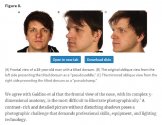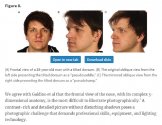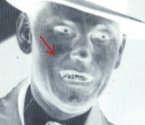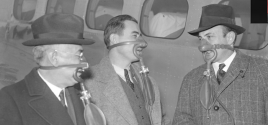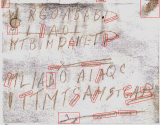The whole business of examining and decoding or decrypting clandestine communication codes is really fascinating. If you already have knowledge of these things then please forgive me while I go through some of the basics of this 'art form' for want of a better term. especially as it applies to the Somerton Man case.
First, many of you will have heard of the Venona cables, these were highly classified cables between Moscow and its outposts throughout the world. The Americans were able to crack the code that the Soviets used and kept that fact secret for 37 years? I stand to be corrected on that last piece of information. Out of all of that cable traffic and its subsequent analysis did you know that they only actually succeeded in decrypting the following:
To date, the NSA has declassified more than 3,000 messages related to Venona. Yet of the voluminous message traffic sent to Moscow from the KGB's New York office, Venona cryptanalysts were able to decrypt only 49 percent of the 1944 messages, 15 percent of the 1943 messages, and a mere 1.8 percent of the 1942 messages.
Amazing isn't it. In the end, it's not how many but the value of the ones that were cracked that really counts. Partial decrypts are par for the course in the world of codebreakers.
From my limited knowledge, the process went something like this. 1. Coded message identified, 2. decrypt effort started and shared amongst a select team of experts 3. eventually a partial decrypt may be achieved.
The team would then shift their attention to analysing their find and then reviewing other decrypts that in some way were related to the main target message. In this way they were able, on some occasions, to build the original decrypt to the point where there was nothing further they could do. This process I believe is similar to the ones used by Western Intelligence agencies in those days.
The point I am making is that it is not just a matter of clicking your fingers and getting someone to provide full and coherent decryption. To believe that would be naive.
To my next point and with regards to the Somerton Man code page, I have been able to partially decrypt some parts of the code on the page and those were published 18 months ago. Here are a couple of links:
1. Link
Here Some interesting names appear and other scraps of information. The name GOLOS crops up amongst other things. One GOLOS was a known Soviet agent in the US, a master with document forgeries it seems. This man died of a heart attack in New York in 1943. Apparently, Jacob was not popular amongst his Soviet masters and it was after he had handed over his list of contacts and networks that he shed his mortal coil. Strange how spies suddenly die of heart attacks. There was another GOLOS, but this man had no connection with Australia until 1949 so there could not be a reference to him on the code page. Jacob Golos is worth following up though even though he was no longer with us. We do not have any information that dates when the code page was written or even whether it was all written at the same time.
2. Another link to a decrypt post
here Somewhat less of a partial decrypt with a reference to a CPA organisation.
I have attached a copy of the code page and a close-up of the crossed lines. The process I used to get them to this stage has also been published. For those who haven't read about this method, here it is:
1. Use a copy of the Adelaide Advertiser image of the code page or any other one that has been proven to be authentic.
2. Print this out on an inkjet printer set to high/best quality and print it on 'bleed proof' paper this will prevent ink spreading and give you a sharper, cleaner image. You should set the print resolution to 1200 dpi or above
Once you have done that you may already see glimpses of the very small letters and numbers that were inked over in the first instance by one agency or another.
What you need to do next is to clean the page up.
Let me explain, if you examine that page under a strong light which is set at an oblique angle, you will see that the printed-out areas have lighter and darker shades. The hidden codes are the darker shades, they need to be isolated or cleaned up.
This next step may sound strange but bear with me, use a very light acid to remove a super thin layer of ink.
Methods used in WW2 included strong household bleach or lemon juice which is a lower strength, an acetic acid. You should try both and observe what happens. The best result is obtained in my experience, by using the lemon juice method.
In the code page image below, if you examine it carefully, you will see the mass of markings that lay beneath the marked over code letters on the page. These are not artifacts, these were the tiny letters and numbers referred to by Detective Brown when he spoke of the telephone number.
With regards to the rest of the markings on the page, I am working to my schedule and can tell you they are being worked on and when they have all been done and analysed I will publish the results. Quite a few of the letters have been processed and the results are very interesting. You are of course welcome to try the process described yourself. It will be interesting to see what you achieve. If you have any questions please leave a message here.
I just would like to stress the point that I am working to a schedule, and in due course, I will publish the full code page decrypt plus other codes that have been found. A big part of cracking the code was finding it in the first instance, now it's being worked through.





